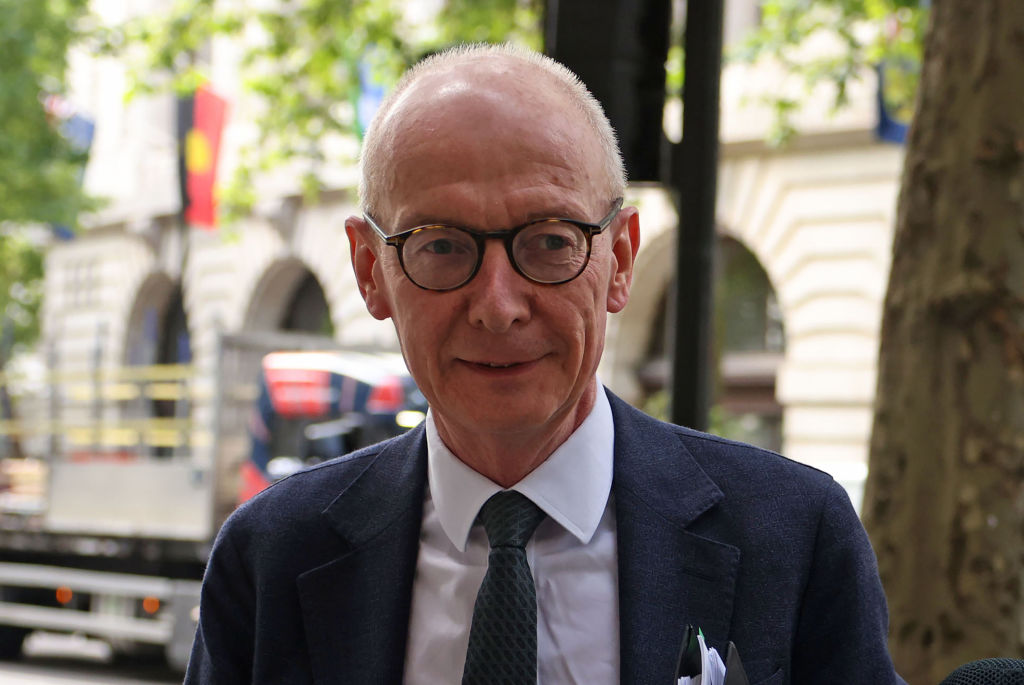To not wholly rapturous reviews, the movie Wicked, the prequel to The Wizard of Oz, is released this week. Tragically, it’s too late for Halloween, so we can expect alienated witches of colour (green) based on Cynthia Erivo to be absolutely everywhere by Christmas. For anyone who loved the Wizard of Oz, 1939 version, this is one to miss.
Could there be any narrative more forward looking, more of our time, than this little story of gender transition?
But, in a spirit of goodwill, let me put a better idea to Universal, the studio behind the film. They have missed a trick. L. Frank Baum, the author of The Wizard of Oz, did, in fact, write umpteen sequels to the first story; it’s the first of these, The Marvellous Land of Oz (1904), which simply calls out for adaptation; the last time it was attempted was a musical in 1981. But that was before anyone realised how miraculously Mr Baum anticipated the mood of the moment 120 years on.
It is, in its way, a prequel to Oz. The story begins with a boy, Tip, who is in the unmaternal care of a mean and ugly witch named Mombi. He creates a creature not unlike the scarecrow called Jack Pumpkinhead which the witch brings to life with her new Powder of Life. With this creature, who regards Tip as a father, and the powder which can animate the most unlikely objects including furniture, the plucky youth sets off to find the Tin Man and thence, with our old friend the Scarecrow, to make for the Emerald City. This has been seized following Dorothy’s departure by a female despot of humble origin, Jinjur, who has, interestingly, a girl army (who spend their spare time making fudge in the palace kitchen). It is to her that the witch Mombi turns when she finds Tip has done a runner.
To cut a short story short, we find that our much-missed friend, the Wizard of Oz, had usurped the throne from an infant called Princess Ozma. And, together with the beautiful but wholly humourless sorceress, Glinda of Oz, our friends (including a much magnified insect called a Woggle-Bug; don’t ask) begin the search for the rightful heiress, a search which leads them to Tip’s witchy old guardian Mombi.
Here we get to the crucial bit and those intending to read this compelling fiction should stop right here. Because it turns out the Wizard of Oz had brought the infant heiress to the witch Mombi to be hidden, and you’ll never guess how she disguised her. Oh, you can? Well, anyway, here is the big reveal. Glinda asks Mombi where is Ozma.
““I enchanted her,” answered Mombi.
“In what way?”
“I transformed her into – into – ”
“Into what?” demanded Glinda, as the Witch hesitated.
“Into a boy!” said Mombi, in a low tone.
“A boy!” echoed every voice; and then, because they knew that this old woman had reared Tip from childhood, all eyes were turned to where the boy stood.”
You can see where we’re going with this, can’t you? A girl is turned into a boy who is about to be turned back into a girl. I mean, it’s more trans than Shakespeare. But the beauty of the whole episode is how well the youth comes to terms with his birth gender and how tactfully and delicately the transition is achieved:
““I!” cried Tip, in amazement. “Why, I’m no Princess Ozma – I’m not a girl!”
Glinda smiled, and going to Tip she took his small brown hand within her dainty white one.
“You are not a girl just now” said she, gently, “because Mombi transformed you into a boy. But you were born a girl, and also a Princess; so you must resume your proper form, that you may become Queen of the Emerald City.”
“Oh, let Jinjur be the Queen!” exclaimed Tip, ready to cry. “I want to stay a boy, and travel with the Scarecrow and the Tin Woodman, and the Woggle-Bug, and Jack – yes! and my friend the Saw-Horse – and the Gump! I don’t want to be a girl!”
“Never mind, old chap,” said the Tin Woodman, soothingly; “it don’t hurt to be a girl, I’m told; and we will all remain your faithful friends just the same. And, to be honest with you, I’ve always considered girls nicer than boys.”
“They’re just as nice, anyway,” added the Scarecrow, patting Tip affectionately upon the head.”
And so it happens. No unpleasant side effects, no psychological trauma, no indelicate surgery, no invasive hormones, just good ol’ sorcery from Mombi. The boy is taken to Glinda’s own tent, all satin cushions and pink gauze, and is there given a potion while Mombi leans over a fire muttering stuff, concluding with the mystic word: “Yeowa!”
And then…
“… from the couch arose the form of a young girl, fresh and beautiful as a May morning. Her eyes sparkled as two diamonds, and her lips were tinted like a tourmaline…”
At this exquisite vision, Tip’s old comrades stared in wonder for the space of a full minute, and then every head bent low in honest admiration of the lovely Princess Ozma. The girl herself cast one look into Glinda’s bright face, which glowed with pleasure and satisfaction, and then turned upon the others. Speaking the words with sweet diffidence, she said:
“I hope none of you will care less for me than you did before. I’m just the same Tip, you know; only – only –”
“Only you’re different!” said the Pumpkinhead; and everyone thought it was the wisest speech he had ever made.”
Now I put it to you, could there be any narrative more forward looking, more of our time, than this little story of gender transition? Entire acceptance of the new gender on the part of friends, entire self-acceptance on the part of the girl/boy/girl. The moral is, Tip is the same, but different.
This little tale has been gestating, unremarked (other than that 1981 musical) for 120 years and now is revealed as the story for a film industry which has yet to produce a really memorable trans princess. Folks, I give you: Ozma. You’re welcome.








Comments